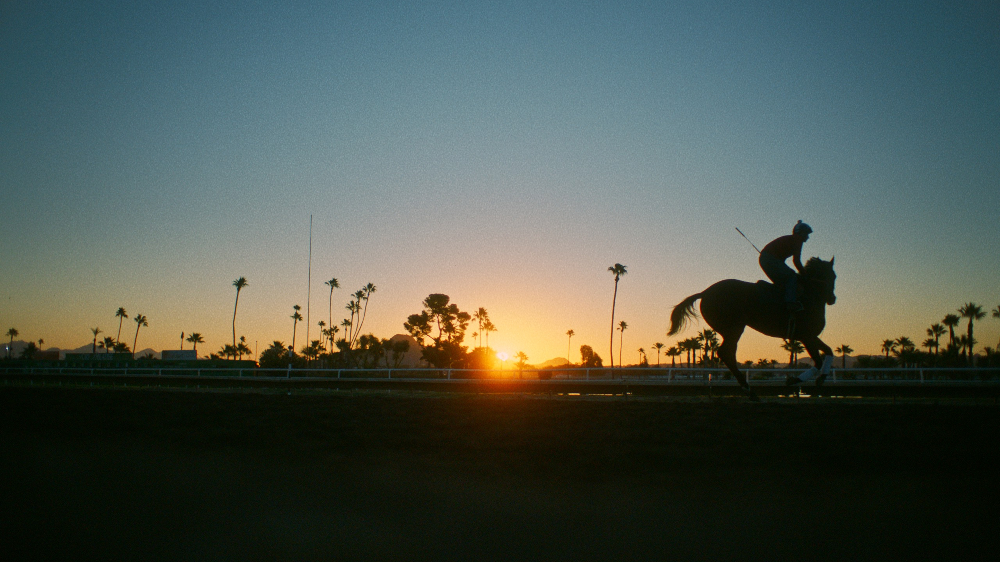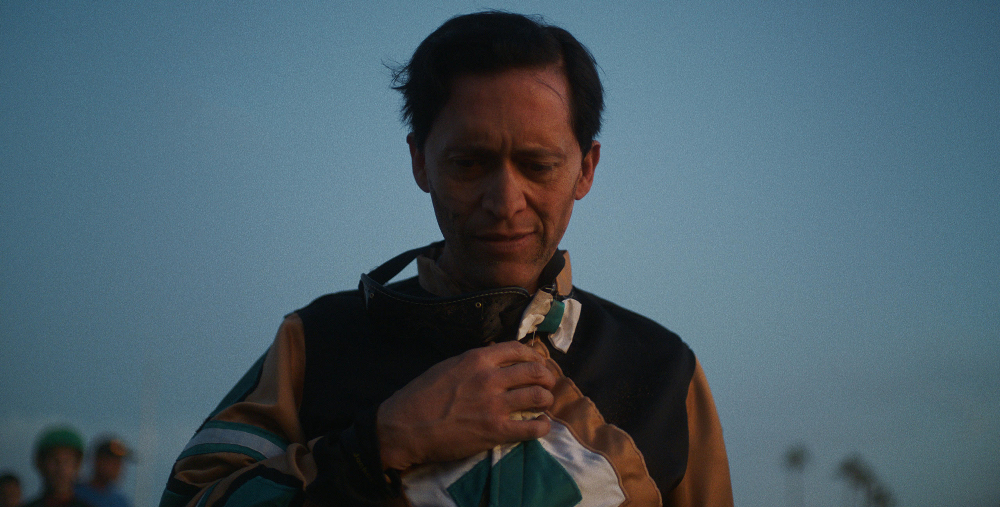
Jackson Silva (Clifton Collins, Jr.) faces a bleak future as Jockey opens. The veteran horse racer is riddled with injuries, younger jockeys are taking his starts, and his partnership with trainer Ruth Wilkes (Molly Parker) is in danger of falling apart over a promising young horse.
Over the next 94 minutes, Jockey reveals itself to be an intimate character study as well as an outstanding showcase for Collins, a gifted actor whose film career stretches back more than 30 years.
The film was written by the team of director Clint Bentley and Greg Kwedar, the latter of whom produced alongside Nancy Schafer. Jockey also marks the U.S. feature debut of Adolpho Veloso, a Brazilian cinematographer who has previously worked in South America and Europe.
Shooting entirely on location with a skeleton crew and minimal equipment, Veloso brings viewers into a hidden world that’s both beautiful and treacherous, and Below the Line was lucky enough to speak with him over Zoom to discuss Jockey and what went into making this scrappy labor of love.
Our interview is below. Enjoy!
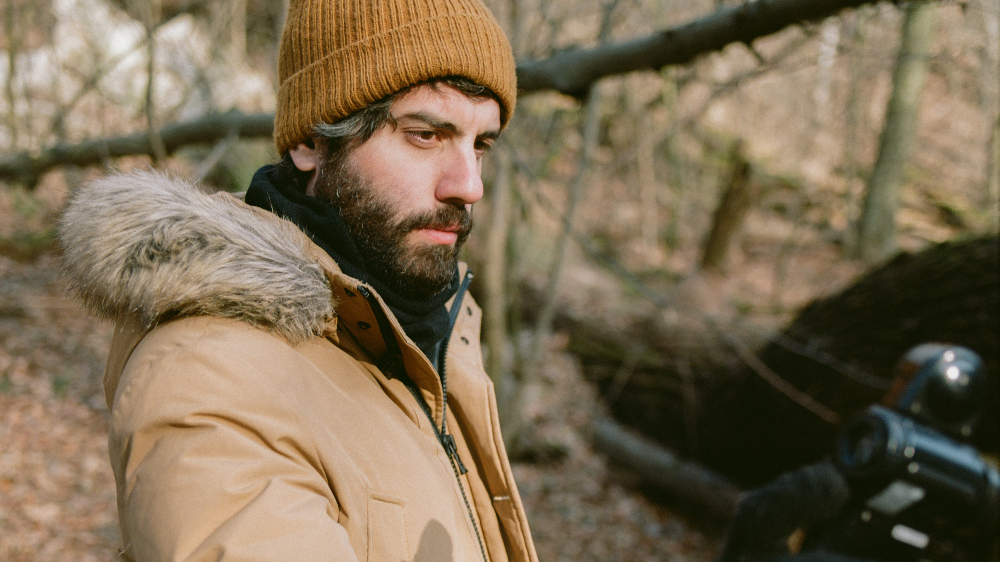
Below the Line: When did you join the project?
Adolpho Veloso: Clint [Bentley] and Greg [Kwedar] emailed me about a documentary I shot called On Yoga, The Architecture of Peace. They sent me a script, saying they wanted to shoot it like a documentary at a place called Turf Paradise, a real race track. They also sent a video of jockeys training in the morning. I could see that the sunrise and colors were stunning, and I loved the script, so I jumped in.
BTL: Can you talk about your schedule and crew?
Veloso: The shoot was 20 days. Our crew was around 10 [people], sometimes less because Clint wanted to shoot a lot of real jockeys in a real environment. Only three of the cast were professionals, Clifton and Molly, and Moses [Arias]. We tried to have a really low footprint on the horse track. That meant almost no lights, just playing with natural light or practical lights. We tried to be small so we wouldn’t interfere. That way we could have interactions between the actors and the real people from the track.
BTL: Working at an operational race track must have restricted what you could do, no?
Veloso: We had to adapt to their schedule, but they were really welcoming. We had to take safety precautions, of course, because we’re talking about horses. Also, we couldn’t disturb the actual races. But they were really nice to us, they let us inside their lives and all their places: the locker room, the sauna, the gym.
The jockeys tend to train really early in the morning. That’s one of the reasons so much of the film is set during magic hour. They start when it’s still dark, they train at dawn, then go back home or whatever. They come back in the afternoon for the races. So we had to play around those times of the day.

BTL: You shoot Jackson and Leo [Logan Cormier] handheld at the rail with the sun in front of them. It’s such a beautiful shot, I could watch it all day. What can you tell me about it?
Veloso: That was one of the first things we shot, and it was actually really good to start that way. Clint gave Clifton and Logan the parameters of the scene, what they should be talking about, and then they were basically improvising. It was amazing to see someone like [Logan], who is not an actor, playing along and doing great with Clifton, who is a genius as we all know already. To see that happening in front of us, the sunrise, the jockeys training the background — this film had these moments where we were seeing magic in front of our eyes. Everybody was just, like, ‘Oh my God!’
BTL: There is a scene that’s like a group therapy session for jockeys, where they sit in a circle and talk about their experiences. How did you shoot that? You couldn’t interfere with what they were saying, but you had to follow a narrative and still provide angles for cutting.
Veloso: That was one camera. We shot it the way we shot the rest of the film. I was just trying to follow whoever was talking, then grab some cutaways. I wanted to avoid one person talking, and another answering out of frame. It was something that I had to do the entire film, basically try to be driven by whoever was talking, whoever was showing something, a feeling or an emotion.
BTL: Did your background in documentaries prove advantageous on this shoot?
Veloso: Clint told me early on that he wanted everything to blend together so you didn’t feel like, ‘Okay, this is an improvised scene,’ or, ‘This is a scripted scene.’ They all had to be part of the same film. So we shot everything the same way. If they were improvising, I would grab, like, five seconds of an empty chair, or someone reacting, so they could cut the material like the scripted scenes. It was a bit of a combination of trying to make the documentary part feel less [like a] documentary and trying to make the scripted part feel more real. Then blend them together.
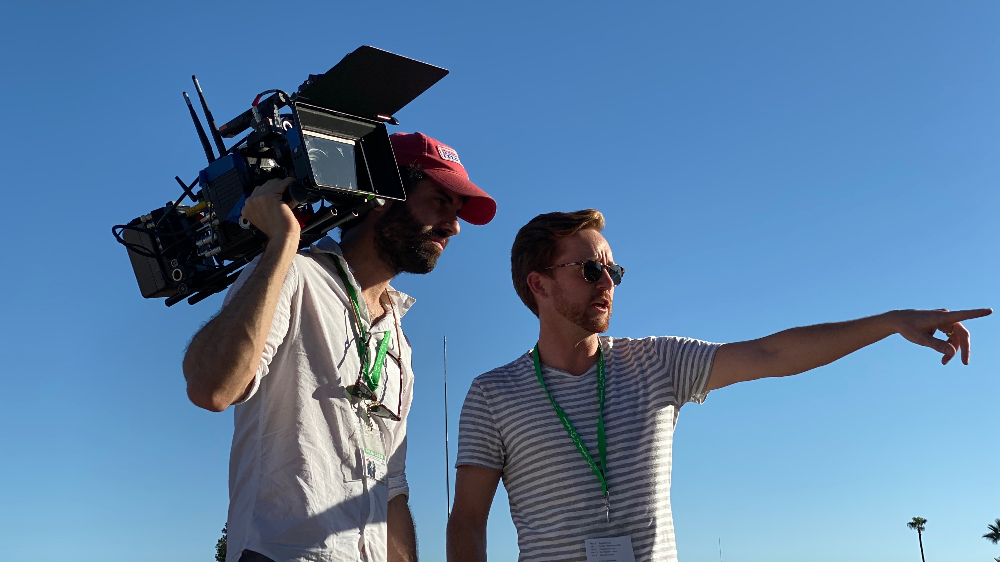
BTL: At one point Jackson gets drunk in his trailer, which meant you had to shoot an improvised scene in a really tight space.
Veloso: I had a really good relationship with Clifton from the start, it was easy to connect early on. We were almost dancing together through the whole process. He’s such an amazing actor, it was really easy to follow him. He’s also so smart that he would know basically where he could go in terms of the camera and the light. He would never go to a really dark area of the frame. That’s how he works, how we worked together, how he could be brilliant in front of the camera and also not put himself in a position the camera wouldn’t like. When you have amazing actors, you just follow them and they give you everything.
BTL: How close did you have to place the camera?
Veloso: It was super tight, but we had wide-angle lenses, which helped. You just plan, ‘Okay, this is small. Clifton, don’t move past me.’ Although even if he wanted to, he couldn’t. Eventually, we worked out hand signals, ways to indicate off-camera which way to go.
BTL: What camera and lenses were you using?
Veloso: I shot on an Arri Alexa Mini, a small camera, but a really good one. It allows you flexibility, because you can shoot with almost no light, just small lamps, yet still get really good quality.
I had a set of old Zeitz Superspeeds that were really small and really fast. That combination of camera and lenses let us shoot with almost no lights.
BTL: That setup let you work by firelight? You have an incredible shot of embers rising up behind Jackson.
Veloso: We planned to shoot everything with real fire because shooting pretend fire with artificial lights, you’re never really able to get the same feeling. At least for me. The flickering is not the same, what the actors feel is not the same. They don’t have that warmth. And if you’re not using real fire, you don’t get those special moments like the embers behind him. That wasn’t planned as such, but it was consistent with our plan to use real fire, wide lenses, and let things happen. When you allow yourself the opportunity, this kind of magic happens. You just take advantage of it.
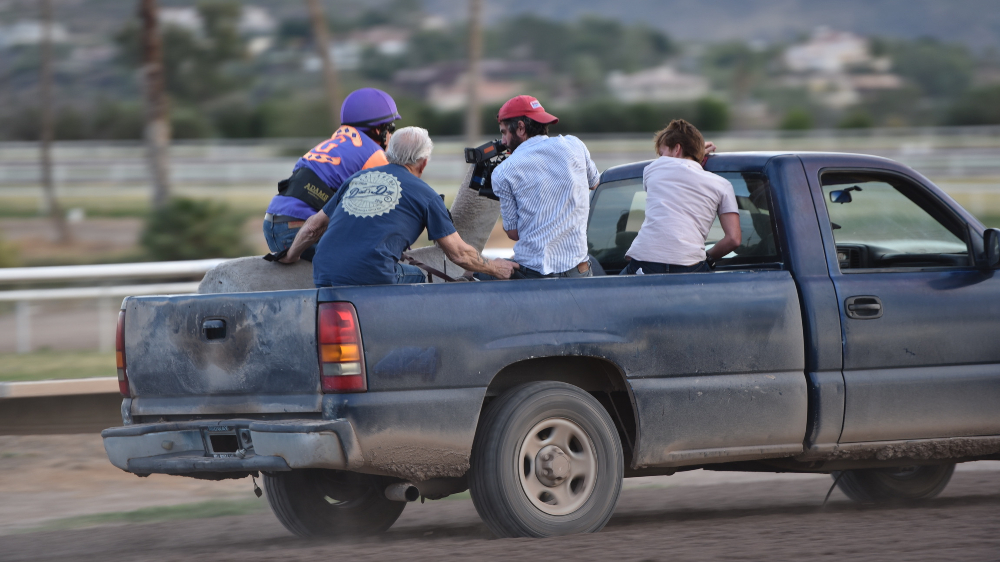
BTL: How did you handle the races in the story? Were you allowed on the track then?
Veloso: We had to keep some distance because of course we couldn’t interfere with the races that were taking place. We couldn’t risk the crew, the horses, or the jockeys. So we had to fake a lot of those moments. [In] some of the scenes at the gates, we didn’t even have horses, we were just shooting closeups of the jockeys. No one could be around when the horses come through. At times we just placed the camera there and had to leave. So it was a combination of a lot of tricks.
BTL: What about the races where you’re close on Jackson?
Veloso: We had a rule that image-wise, everything should be from his perspective. The language we created for that rule was to be really close to him. That was helpful for his races, because if you have his point-of-view for the entire film, then suddenly during his race you pull back far away to show the crowd, it wouldn’t make any sense. We kept true to that rule, which allowed us to shoot in an interesting way despite the limitations we had.
It was a really simple setup. We were in the back of a pickup truck, and Clifton was wired to this fake horse. As brilliant as he is, he was just mimicking the horse’s movement himself. I had a camera really close to his face, and we had people throwing mud in his face to show the race progressing.
BTL: Did you shoot before COVID-19?
Veloso: Right before, at the end of 2019. Post-production happened during COVID, which was a bit hard because when we got the news from Sundance that we were accepted, the film was not quite ready. We were grading in Brazil. Clint got COVID during the grading, then I got COVID in the UK, so it was a last-minute pandemic mess. But everything turned out okay.
BTL: Are you healthy now?
Veloso: Yes, one hundred percent. My COVID was nothing compared to what other people faced.
BTL: Can you talk a little about how you got into cinematography?
Veloso: I went to film school in Sao Paulo, Brazil, where I was born, just after I graduated high school. I started working early. When I was 17, I was working as a PA, doing whatever I could. I was shooting stuff at the same time, music videos, shorts, things like that. One thing led to another. First Brazil, then South America, at some point Europe. I’m still trying.
